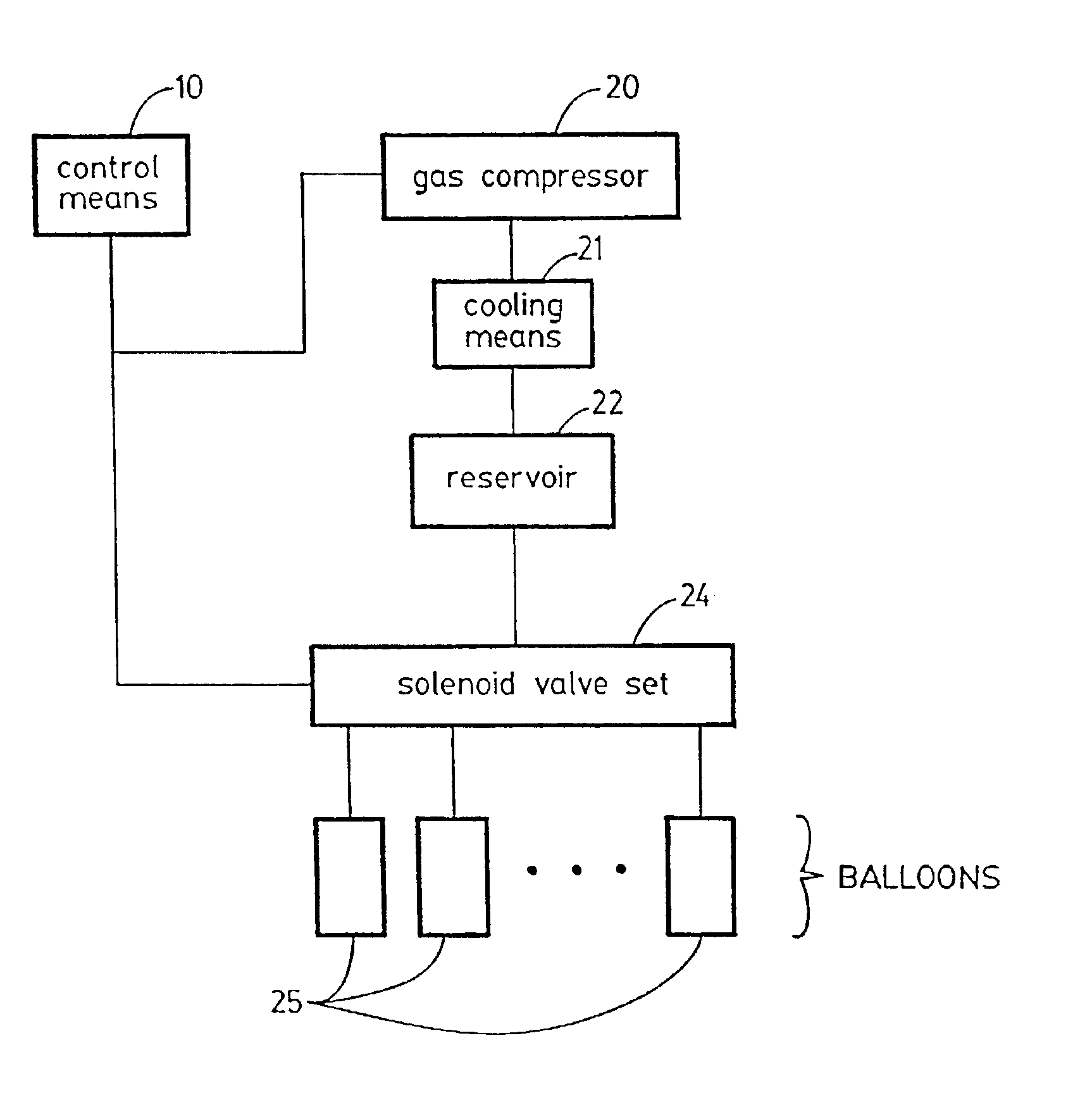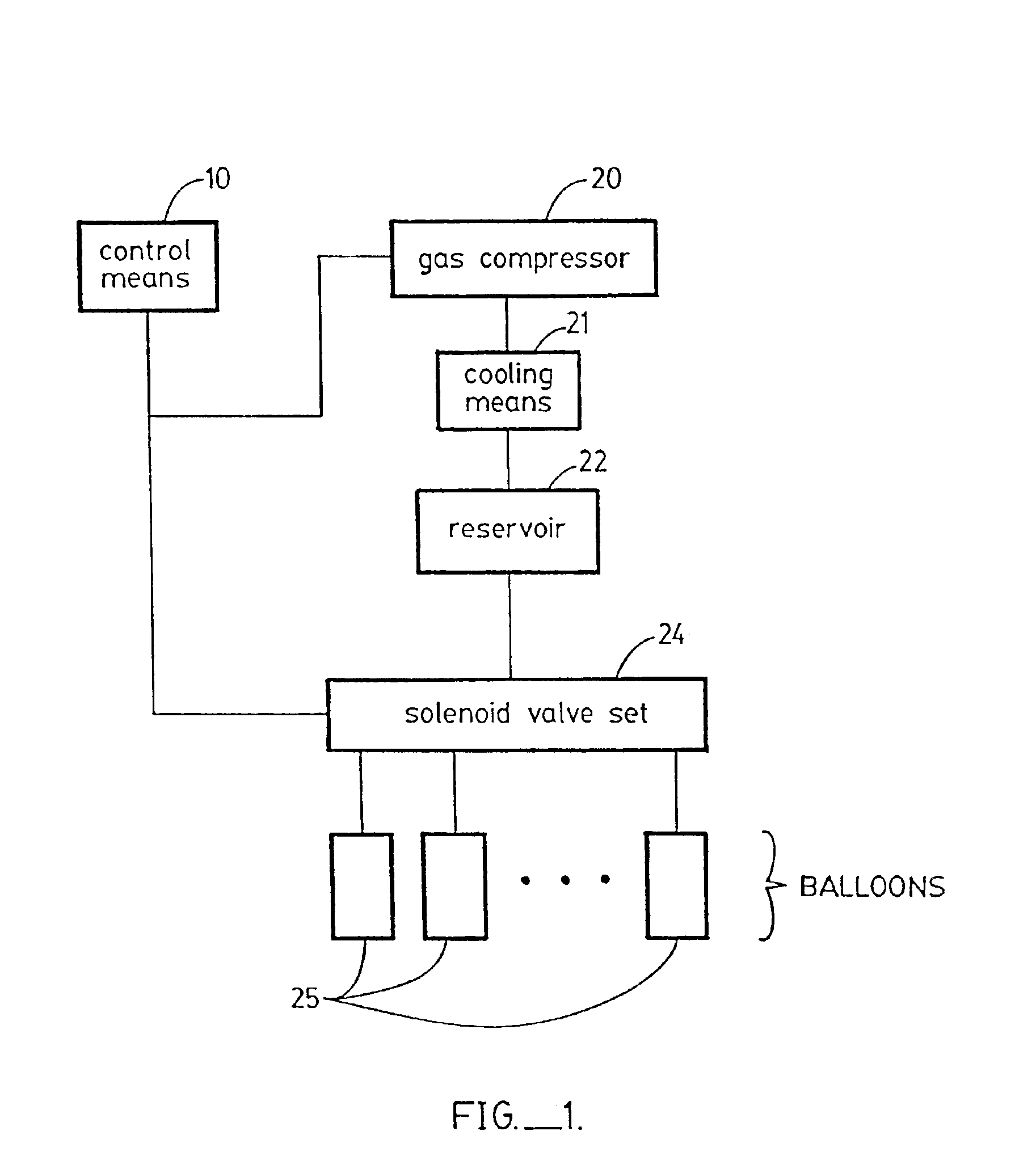High efficiency external counterpulsation apparatus and method for controlling same
a counterpulsation apparatus and high-efficiency technology, applied in the field of external counterpulsation apparatus and method for controlling the same, can solve the problems of unsuitable everyday clinical use, unsuitable for use, and expensive devices, and achieve the effects of improving the efficiency of the apparatus, and improving the efficiency of the
- Summary
- Abstract
- Description
- Claims
- Application Information
AI Technical Summary
Problems solved by technology
Method used
Image
Examples
first embodiment
FIG. 1 is the block diagram of the external counterpulsation apparatus according to the present invention, wherein a control means 10 controls the gas compressor 20 and set of solenoid valves 24. The compressor can be of rotary vane type, piston type, diaphragm or blower type. However, the preferred embodiment would be a scroll type compressor as described in the Chinese Patent CN1030814A, which essentially consists of two scroll basins with very narrow gaps between them; with one scroll basin adapted to rotate at a very high speed (3,000 rpm) while the other scroll basin remains stationary. The clenching of the scroll basins compresses the air radially inwardly toward the center and the compressed air comes out of the center shaft. The scroll type of compressor is more efficient in operation, more quiet and smaller in size than other types of compressors and, therefore, is suitable for the external counterpulsation apparatus described hereof. During operation, the compressor 20 ope...
second embodiment
FIG. 2 illustrates the external counterpulsation apparatus according to the present invention. In this embodiment, a control signal is first generated by the control means 10, then the compressor 20 operates to compress gas into the positive pressure reservoir 22 after being cooled by the cooling means 21. A pressure limiting valve 23 is provided on the positive pressure reservoir to keep its internal pressure constant. A negative pressure reservoir 26 connected to the inlet of the compressor 20 produces negative pressure. The control means 10 controls the opening and closing of the set of solenoid valves 24 by issuing inflating and deflating driving signals in accordance with the results of detection. Again, when the set of solenoid valves 24 are in the first position, they inflate the balloons 25. When they are in the second position, they deflate the balloons 25. The gas discharged from the balloons is discharged into the negative pressure reservoir 26 via the set of solenoid val...
third embodiment
FIG. 3 illustrates the external counterpulsation apparatus according to the present invention; wherein the control means 10 generates control signals and the compressor 20 operates to produce two portions of pressurized gas, one portion of pressurized gas is sent to the positive pressure reservoir 29, while another is sent into the positive pressure reservoir 22 via the cooling means 21 and the throttle valve 28. The pressure limiting valve 23 is operative to adjust the pressure inside the reservoir 22. The reference numeral 30 indicates a two-position, five-way solenoid valve or two two-position, three-way solenoid valves, 31 indicates a mono-directional throttle valve, 35 indicates a cylindrical gas distribution means or cylinder, 37 is a partition and 36 indicates a piston. When an inflation driving signal is issued by the control means, the solenoid valve 30 opens to the first of the two positions, and the gas flow is introduced into the portion I of the cylinder from the reserv...
PUM
 Login to View More
Login to View More Abstract
Description
Claims
Application Information
 Login to View More
Login to View More - R&D
- Intellectual Property
- Life Sciences
- Materials
- Tech Scout
- Unparalleled Data Quality
- Higher Quality Content
- 60% Fewer Hallucinations
Browse by: Latest US Patents, China's latest patents, Technical Efficacy Thesaurus, Application Domain, Technology Topic, Popular Technical Reports.
© 2025 PatSnap. All rights reserved.Legal|Privacy policy|Modern Slavery Act Transparency Statement|Sitemap|About US| Contact US: help@patsnap.com



